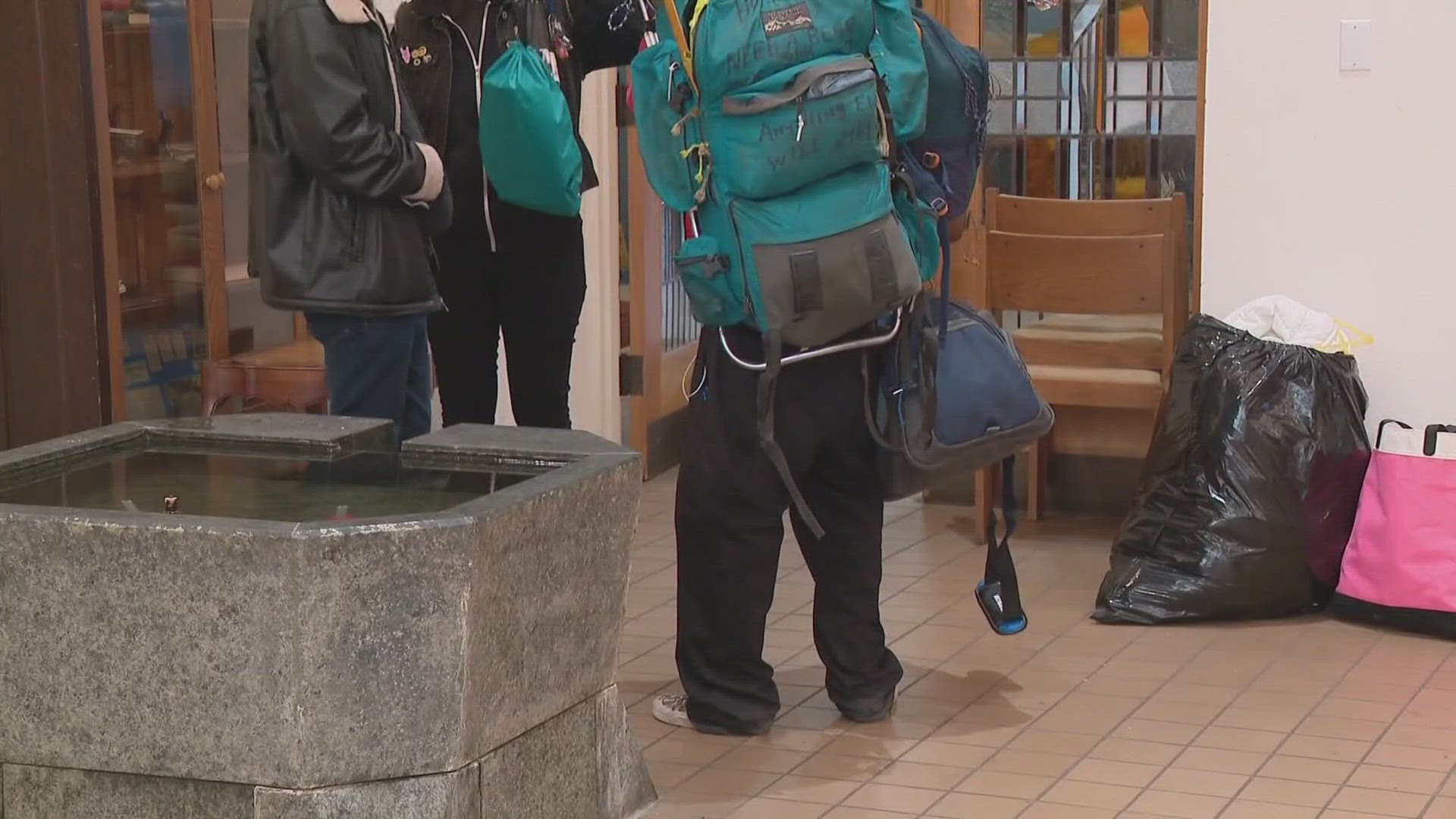COLUMBUS, Ohio — Kimberly Chandler, of Columbus, is among a growing number of people aged 55- years or older, who now find themselves living in a shelter.
Chandler has called the downtown YWCA home for the past six years.
"A credit card company garnished my wages and then it became a domino effect. I lost my vehicle; I lost my job, and I lost my apartment," she says.
Two months ago, the City of Columbus made what it called a “historic” investment toward addressing homelessness by awarding nearly $10 million to the Community Shelter Board. The money didn’t build a single shelter. What it did, was maintain the programs that are already here, and pay those who assist those in need of shelter.
For the YWCA that means it can continue to subsidize rents for people like Kimberly Chandler who also uses money from her part-time job to pay what the YWCA can't.
"My apartment goes for $1,035 on the market but I only pay $735 but they take 30% off because of my income," she says.
Columbus' shelters are always full. A recent trend shows those coming in are older and staying longer.
In 2014, 10% of those living in a shelter in Franklin County were older than age 55. Today, that number is 22%, according to the Community Shelter Board.
The head of the board, Shannon Isom, sees trouble ahead.
“We know that we need about 14,000 more housing. I mean it's a big number,” she says.
Focus Strategies, a national research firm, predicts that the housing affordability crisis in Columbus and Franklin County will drive an 86% increase in unsheltered homelessness by 2028.
“What it is ultimately telling you is housing stock has run out, and the housing stock that is becoming available is through eviction,” says Isom.
And those living in shelters are the oldest they’ve ever been, says Isom.
“What we are seeing is that those who are 62 and over are the most increasing of any other population that we see in the shelter,” says Isom.
According to the Community Shelter Board, in 2007, single men stayed in a shelter on average 46 days. Now, they stay for an average of 69 days. Single women who once stayed in a shelter for 31 days during the same time period, now stay 63 days.
Isom is taking a hard look at how Columbus solves it’s growing population within its shelters.
A sign in Isom's office reads 'end homelessness by 2030' - a goal Isom says the city will reach. To reach it, the city will have to adapt to a changing shelter population.
“People are coming into the shelter with more money. People are coming into the shelter employed. We have nurses we have fully employed people living within our shelter. What is that telling us? that is telling us that people are losing their housing that people don't have enough discretionary income,” she says.
City leaders are working to address the issue of a lack of affordable housing.
The Columbus Housing Strategy, funded through the passage of a $250 million bond package passed by voters, has allowed Columbus to partner with other builders to construct 12 low income housing projects. They are geared towards those who earn between $20,000 and $30,000 a year.
The Columbus Metropolitan Housing Authority, along with Columbus Housing Enterprise and Nationwide Children's Hospital are among others that are buying apartments and selling them at 50% less than market value then using that money to pay off the mortgage to allow low income earners to own their own place.
According to the Columbus Metropolitan Housing Authority, more than 30,000 people are on a wait list for housing in Franklin County.
“We must have more housing, there is just no way around it,” says Isom.
Where will the new housing come from? Isom points to the possibility of closed school buildings.
As for Chandler, who says her life fell apart after a failed marriage, mental illness and a mountain of credit card debt, she says having a home is more than a safe place to sleep.
“I have that dignity again. I have that self-love. I have that perseverance,” she says
Without the YWCA she says she would be homeless again.

